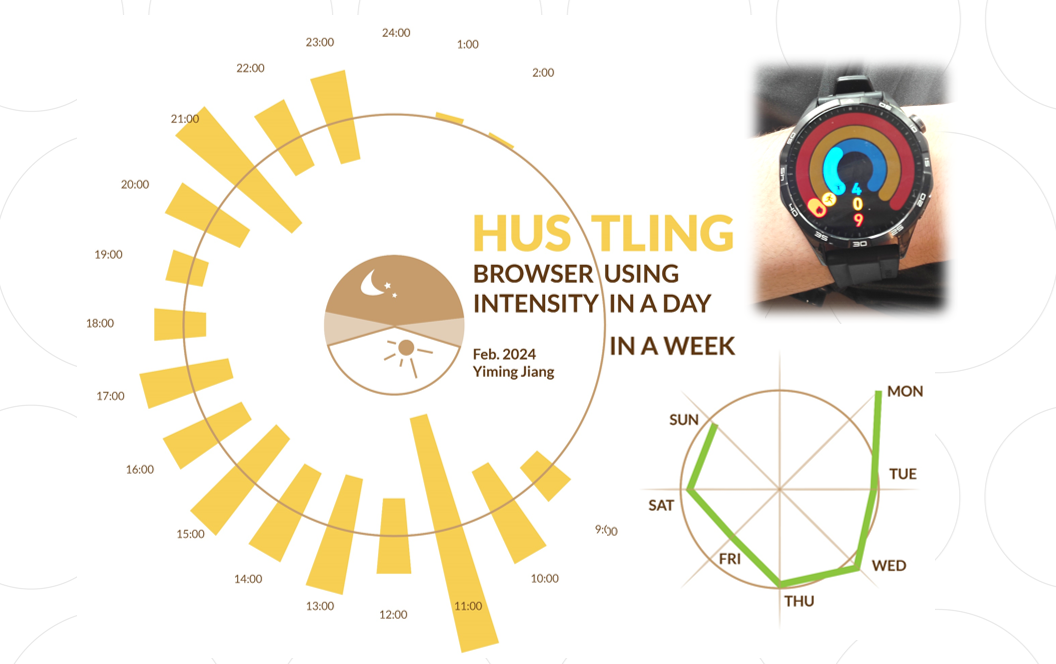
Data Selfie Research
DESIGN RESEARCH METHODS / 2024
For groups such as urban office workers and students who have high life pressure, it is difficult for them to be conscious of one`s regulation (quantitatively recorded) information. (Landais, L.L. et al., 2022) To describe some scenarios of life, I deal with qualitative data. According to Tega Brain and Golan Levin (2021), databases are amassed from our digital communications, search histories, transactions, step counts, sleep patterns, and journeys. In this practice of mine, I collected photos of various factors that might affect people`s work efficiency: weather, time until the next deadline, commuting status, coffee, office environment, etc.

The research method of Data-Selfie records one`s own data retains more subjectivity and privacy and is perfect for observing preferences of a targeted group. I encourage my audience to engage in self-disclosure, including diary studies, data-selfie, autoethnography and other research methods. Here I took myself as object, worked with data of my browsing history to see my energy routine throughout a day, to avoid the difference in the interpretation of data that poststructuralists concerns.

There are multiple aspects to interpret these vague data, depending on which life narrative I put myself in. For example, in the output chart below, I use the frequency of opening new web pages as a reference for "work concentration & efficiency". The results are also in line with expectations: I am used to drinking my first cup of coffee at 10 o'clock, enjoying dinner at 19 o'clock, and taking a shower at 24 o'clock; I am most energetic on Mondays and most sluggish on Fridays. Therefore, it is clarified that such a data set has a strong explanatory power.
